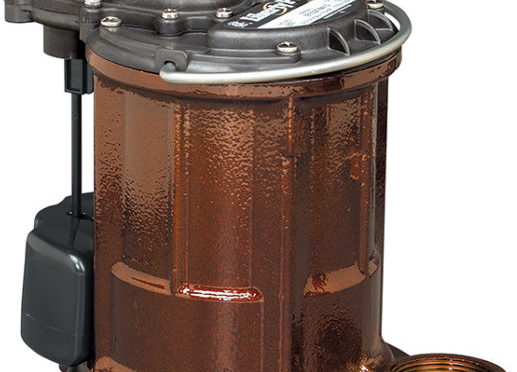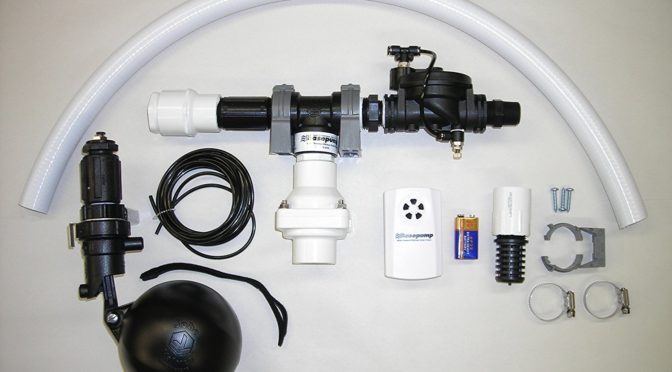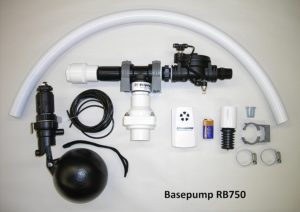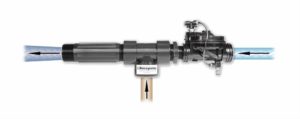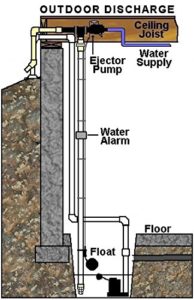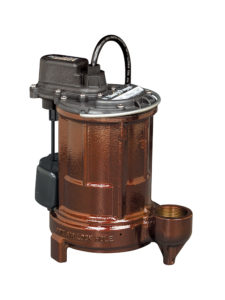 When shopping for a sump pump on a budget, it’s tempting to go with whatever’s on sale at the local box store. But if you want something you’re not going to have to return or replace within a few months to a year, it’s worth spending more on some quality construction and solid design. If you’ve got an unlimited budget,the best AC sump pump on the market is the Zoeller M267 while the best water-based pump is the Basepump CB1500. But if you’ve got less to spend and still want something reliable, what are your choices?
When shopping for a sump pump on a budget, it’s tempting to go with whatever’s on sale at the local box store. But if you want something you’re not going to have to return or replace within a few months to a year, it’s worth spending more on some quality construction and solid design. If you’ve got an unlimited budget,the best AC sump pump on the market is the Zoeller M267 while the best water-based pump is the Basepump CB1500. But if you’ve got less to spend and still want something reliable, what are your choices?
Among AC pumps under the $200 mark, some of the best sump pumps currently sold include the Wayne CDU980E, the Zoeller M63, Zoeller M57, and Zoeller M53. Any of these pumps can easily give a decade of reliability. However, if you’re looking for even more insurance against future maintenance and billable hours from your local plumber, you’ll also want to consider the Liberty Pumps 257 Automatic Submersible Sump Pump with VMF Switch. It’s the lower-end version of the Liberty Pumps 287 and delivers many of the same features for significantly less money. It’s also one of the most reliable sump pumps you can buy that runs on AC power. Let’s take a closer look at it below. If you’re ready to buy, you can buy it here.
Key Features of the Liberty Pumps 257 Sump Pump (60 Second Summary)
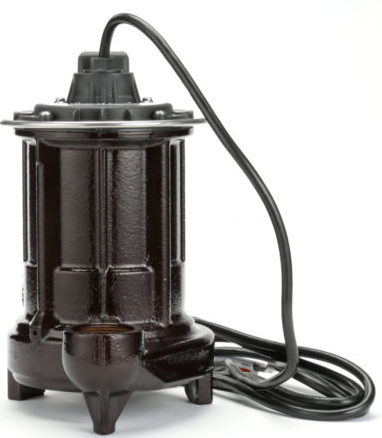 The Liberty Pumps 257 sump pump is an automatic submersible sump and effluent pump. It’s powered by a 1/3rd horsepower electric motor that runs at 115V, draws 5.2 amps, and is thermally protected. Capable of pumping up to 3,000 gallons per hour (50 US gallons per minute), it is made of cast iron and is backed by a 3 year warranty from Liberty Pumps. It is 9.6 inches in diameter, 10.5 inches tall, and weighs 20 pounds.
The Liberty Pumps 257 sump pump is an automatic submersible sump and effluent pump. It’s powered by a 1/3rd horsepower electric motor that runs at 115V, draws 5.2 amps, and is thermally protected. Capable of pumping up to 3,000 gallons per hour (50 US gallons per minute), it is made of cast iron and is backed by a 3 year warranty from Liberty Pumps. It is 9.6 inches in diameter, 10.5 inches tall, and weighs 20 pounds.
The 257 does not include a battery backup. It can handle solids up to 1/2 inch in diameter and liquids up to 140F. The motor includes a thermal overload protection that activates at 221F. It includes a quick-disconnect 10 foot power cord that allows the cord to be replaced without breaking motor seals. It features a vertical magnetic float switch (VMF); the switch is not adjustable and turns on at 7 inches and turns off at 3-1/2 inches. It includes a 1-1/2 inch NPT discharge and can be installed in sump pits as small as 10 inches in diameter.
Peak water removal is 3,000 GPH at 0 feet, dropping to 2,220 GPH at 10 feet, 840 GPH at 20 feet, 300 GPH at 22 feet, and shut off at max head at 23 feet.
How Does the Liberty Pumps 257 Compare to the Zoeller M63, Zoeller M57, Zoeller M53, and Wayne CDU980E Sump Pumps?
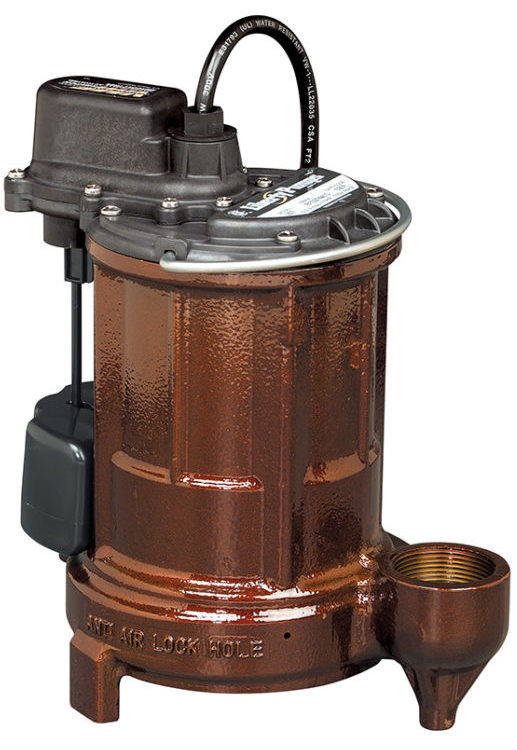 The most significant difference between the Liberty Pumps 257 and similarly-priced Zoeller and Wayne pumps like the M63, M57, M53, and CDU980E is the presence of a magnetically-operated vertical float VMF switch in the 257. Instead of the typical mechanical float switch most commonly found in electric sump pumps, the Liberty 2xx series uses a magnetic reed switch that’s less failure prone than a mechanical setup since no rubber gaskets are needed to keep the switch arm sealed. This eliminates a switch failure point due to water entry or general mechanical failure. What this means is that the 257 is probably the most reliable electricity-based sump pump you can buy under $200 today.
The most significant difference between the Liberty Pumps 257 and similarly-priced Zoeller and Wayne pumps like the M63, M57, M53, and CDU980E is the presence of a magnetically-operated vertical float VMF switch in the 257. Instead of the typical mechanical float switch most commonly found in electric sump pumps, the Liberty 2xx series uses a magnetic reed switch that’s less failure prone than a mechanical setup since no rubber gaskets are needed to keep the switch arm sealed. This eliminates a switch failure point due to water entry or general mechanical failure. What this means is that the 257 is probably the most reliable electricity-based sump pump you can buy under $200 today.
Beside the design difference, the Liberty Pumps 257 is competitive in its water removal abilities. The Zoeller M63 and M57 top out at 2,580 GPH and have shut off heights of 20 and 19 feet respectively, which are both bested by the 257 and its 3,000 GPH max pumping speed and 23 foot max pumping height. The Wayne CDU980E is faster at 4,600 GPH and has a higher max pumping height of 26 feet, but is at least partially constructed of plastic and not fully housed in cast iron like the the 257. Upgrading to the Liberty Pumps 287, which features a max pumping speed of 4,020 GPH and a max head of 37 feet would close the speed gap and eliminate the pumping height advantage of the CDU980E while continuing to offer the significant reliability boost of the magnetic float switch.
Our Short and Long Term Experiences Installing and Using the Liberty Pumps 257 Sump Pump
Installation was rather straightforward; you simply place the pump in your sump pit, hook it up to your discharge pipe, set your float, and plug it in. You don’t need to call a plumber to get it set up unless you don’t want to get your hands a bit wet, as long as you already have some PVC pipe handy and a day to work at your own pace. Keep in mind that the pump mustn’t be allowed to run dry; despite featuring a thermal overload, the motor will still have a significantly shorter lifespan if it’s only being cooled by forced shutdowns whenever it overheats.
Once you’ve got it installed, you can rest easy; it should give you more than a decade of problem-free use as long as you ensure the float switch is in good working condition from time to time. That said, we’d never recommend trusting any property you value to only one sump pump. We’ve got recommendations for effective and cheap backup solutions below. In day to day operation you’re probably not going to hear the 257; it’s a quiet pump and an effective one. The fact that it’s capable of grinding small solids also adds to its reliability, as it’s not going to go belly up the first time a bit of gravel from a contaminated groundwater source hits the impellers.
Troubleshooting and Installation Tips to Get Your Liberty Pumps 257 Working Sooner
Even if you’ve got a reliable AC sump pump (and under $200, it’s hard to do better than the Liberty Pumps 257), you never want your property to depend on just one sump pump; redundancy is essential. You can choose a water-based backup like the Liberty Pumps SJ10 or a DC backup like the Wayne WSM3300 (or a budget backup like the Wayne ESP25), but whatever you get, make sure you get something to protect your basement.
Regardless of what you get, make sure you set up the backup float switch above the 257’s so the 257 activates first and the backup only starts running if the 257 isn’t keeping up with the water (or isn’t starting due to a power outage). Additionally, you’ll want a water alarm; you can install this above your backup float switch so you’ll know if every recourse fails and water starts rising to dangerous levels.We recommend the Basement Watchdog. Between a main pump, a backup pump, and a water alarm, your odds of needing to deal with a flooded basement should be very low.
Liberty Pumps 257 Sump Pump Pros, Cons, and Value Comparison
In conclusion, while the under $200 sump pump market is full of competition, we can easily say the Liberty Pumps 257 is one of the strongest contenders in the field. It’s compact, very fast, made from cast-iron, and features a far more reliable float switch design than the vast majority on the market at any price. Our main suggestions for improvement would be to upgrade to the Liberty Pumps 287 for a much greater max head and a higher pumping rate, and to add the Liberty Pumps SJ10 for a water-based backup pump to either the 257 or the 287. With a good main pump and a reliable backup, you can enjoy a dry basement for as long as you own your home.
You can buy the Liberty Pumps 257 here on Amazon. You can buy the Liberty Pumps 287 here. You can buy the Liberty Pumps SJ10 here. You can buy the Wayne WSM3300 here or buy the Wayne ESP25 here. You can buy a water alarm here. You can buy a silent check valve here.
 If you find our work at PumpThatSump helpful, you can put our relentless reviewing of every pump and fixture on the market to the test by shopping via our links above for whatever you need to make your house a home. Despite being self-employed, we promise not to spend it all on health insurance.
If you find our work at PumpThatSump helpful, you can put our relentless reviewing of every pump and fixture on the market to the test by shopping via our links above for whatever you need to make your house a home. Despite being self-employed, we promise not to spend it all on health insurance.
